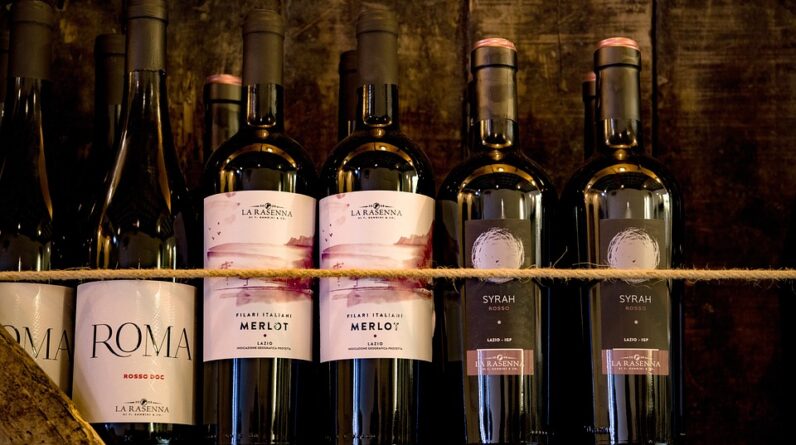Are you craving the flavors of Italy? Look no further – we have got you covered! In this article, we will show you the secrets to creating a well-balanced Italian antipasto platter that will transport you straight to the streets of Rome. From savory cured meats to tangy marinated vegetables, prepare to discover the perfect combination of flavors and textures that will leave your taste buds begging for more. Get ready to impress your guests with an authentic and delicious antipasto platter that captures the essence of Italy.

Selecting the Right Ingredients
Cured Meats
When selecting cured meats for your Italian antipasto platter, it is essential to choose a variety that offers a balanced combination of flavors. Popular options include prosciutto, salami, pancetta, and coppa. These meats provide a rich and savory element to your platter and add depth to the overall taste experience.
Cheeses
Cheeses are a crucial component of any antipasto platter, and when it comes to Italian cuisine, there is a wide array of delectable options to choose from. Some popular choices include Parmigiano Reggiano, Fontina, Gorgonzola, and Mozzarella. Selecting a mix of soft and hard cheeses will provide diverse textures and flavors.
Olives and Pickled Vegetables
No Italian antipasto platter is complete without a selection of olives and pickled vegetables. Olives add a briny and tangy element, while pickled vegetables bring a zesty and refreshing crunch. You can choose from a variety of options such as Kalamata olives, green Sicilian olives, marinated artichokes, and pickled peppers to provide a range of tastes and textures.
Breads and Crackers
To accompany the cured meats, cheeses, and marinated vegetables, it’s essential to choose the right bread and crackers. Traditional Italian bread like ciabatta or focaccia can be sliced into bite-sized pieces, providing a chewy and flavorful base for your antipasto platter. Additionally, including a selection of crispy crackers offers a contrasting texture and allows for easy pairing with the other ingredients.
Arranging the Antipasto Platter
Choosing the Right Platter
Selecting the appropriate platter is essential to showcase your antipasto ingredients in the best possible way. Opt for a large, rectangular platter that provides enough space for arranging the various components. Consider using a wooden or ceramic platter, as these materials add a rustic and authentic touch to the presentation.
Grouping Similar Ingredients Together
To create a visually appealing antipasto platter, it’s important to group similar ingredients together. Arrange the cured meats in one area, the cheeses in another, and the olives and pickled vegetables in separate sections. This organization not only makes it easier for guests to navigate the platter but also adds an aesthetic appeal by creating defined areas of colors and textures.
Creating Visual Appeal with Colors and Textures
Antipasto platters should be visually enticing, captivating guests from the moment they lay eyes on them. Incorporate a variety of colors by selecting different types of cured meats, cheeses, olives, and vegetables. The contrasting hues, such as the rich reds of cured meats and the vibrant greens of olives, create an eye-catching display. Additionally, vary the textures by including soft cheeses, firm meats, and crunchy vegetables to engage both the palate and the eyes.
Adding Garnishes and Fresh Herbs
To further enhance the presentation and add a burst of freshness, consider adding garnishes and fresh herbs to your antipasto platter. Sprigs of basil, rosemary, or parsley can be strategically placed among the various ingredients to provide an aromatic and decorative element. Lemon or orange zest, along with a drizzle of olive oil, can also elevate the flavors and create an enticing aroma.

Pairing Flavors and Textures
Contrasting Flavors
One of the keys to a well-balanced antipasto platter is the art of contrasting flavors. Pair salty cured meats with sweet fruits such as melon or figs to create a delightful balance on the palate. The saltiness of the meats combined with the natural sweetness of fruits creates a harmonious contrast that is pleasing to the taste buds.
Balancing Salty and Sweet
In addition to contrasting flavors, it’s crucial to achieve a balance between salty and sweet elements on your antipasto platter. The saltiness of cured meats and cheeses can be balanced with the sweetness of honey, fruit preserves, or even a drizzle of balsamic glaze. By incorporating these sweeter components, you create a harmonious blend of flavors that will leave your guests satisfied.
Mixing Soft and Firm Textures
A well-balanced antipasto platter should offer a variety of textures, including both soft and firm elements. Soft cheeses like Mozzarella or Gorgonzola can be paired with firm cured meats such as salami or prosciutto. This combination provides a pleasant contrast in texture and adds depth to the overall eating experience.
Adding Crunchiness
To provide a satisfying crunch, make sure to include some crunchy elements on your antipasto platter. This can be achieved by adding crudités such as celery and carrots, crispy breadsticks, or even toasted nuts. The addition of these crunchy components not only adds texture but also provides a delightful contrast to the other softer ingredients.
Providing a Variety of Tastes
Including Savory Options
To cater to different palates, it’s important to include a variety of savory options on your antipasto platter. This can be accomplished by selecting a range of cured meats with various levels of saltiness and flavors. Additionally, consider including marinated mushrooms, sun-dried tomatoes, or roasted garlic to offer additional savory notes.
Incorporating Spicy Elements
For those who enjoy a little heat, incorporating spicy elements into your antipasto platter can be a delightful surprise. Consider adding slices of spicy salami or pepperoncini peppers to provide a kick of spiciness. Just be mindful of your guests’ spice tolerance and offer milder options alongside the spicier choices.
Offering Tangy and Tart Flavors
Adding tangy and tart flavors to your antipasto platter is essential for providing a well-rounded taste profile. Pickled vegetables like giardiniera or caper berries can offer a tangy and zesty flavor, while marinated artichokes or sun-dried tomatoes provide a delicious tartness. These elements add depth and complexity to the overall taste experience.
Including Creamy and Mild Choices
To cater to those who prefer milder flavors, including creamy and mild options on your antipasto platter is crucial. Soft and spreadable cheeses such as Mascarpone or Brie can provide a creamy and delicate taste. Pair these with blander cured meats like mortadella or coppa, allowing their subtle flavors to shine.

Considering Dietary Restrictions
Vegetarian and Vegan Options
To accommodate guests with dietary restrictions, it’s important to include vegetarian and vegan options on your antipasto platter. Opt for plant-based cheeses or spreads, such as vegan ricotta or cashew-based cream cheese, to provide alternatives to traditional dairy products. Additionally, include a variety of fresh vegetables, marinated tofu, or stuffed grape leaves to cater to vegetarians and vegans.
Gluten-Free Alternatives
For guests with gluten intolerances or sensitivities, it’s crucial to incorporate gluten-free alternatives on your platter. Instead of traditional bread, offer gluten-free crackers or make your own gluten-free breadsticks using alternative flours. It’s also important to check the labels of cured meats and pickled vegetables to ensure they are gluten-free.
Accommodating Nut and Dairy Allergies
To accommodate guests with nut or dairy allergies, it’s essential to be mindful of cross-contamination and ensure that all ingredients are clearly labeled. Create a separate area on the platter for nut-free options, such as vegetables, gluten-free crackers, and cured meats that are prepared in a nut-free facility. Similarly, offer dairy-free cheese alternatives for those with lactose intolerance or dairy allergies.
Catering to Specific Food Preferences
Everyone has their own unique food preferences, so it’s important to consider individual tastes when planning your antipasto platter. Take note of any specific requests from your guests and provide alternatives accordingly. This could include incorporating non-traditional ingredients or offering alternative flavors to cater to personal preferences.
Adding Regional Specialties
Incorporating Local Delicacies
When creating an Italian antipasto platter, it’s an excellent opportunity to showcase local delicacies and ingredients from your region. Including locally produced cured meats and artisanal cheeses adds a personal touch and allows your guests to experience the flavors of your area. Local preserves, honey, or even homemade spreads can also elevate the platter with unique and distinctive flavors.
Including Traditional Italian Ingredients
To stay true to the essence of Italian cuisine, including traditional Italian ingredients is a must. This can include ingredients such as sun-dried tomatoes, marinated artichokes, and cured olives. These classic Italian flavors will transport your guests to the heart of Italy and provide an authentic taste experience.
Exploring Different Italian Regions
Italy is known for its regional diversity in cuisine, so why not incorporate this into your antipasto platter? Take inspiration from different Italian regions and include ingredients that are specific to certain areas. For example, if you want to highlight Tuscan flavors, include Tuscan salami, Grana Padano cheese, and Tuscan olives.
Adding Unique and Unusual Elements
To make your antipasto platter truly memorable, consider adding unique and unusual elements that will surprise and delight your guests. This could include ingredients like truffle-infused honey, smoked sea salt, or even edible flowers. These unexpected additions will add intrigue to the platter and make it a talking point among your guests.

Serving Sizes and Portions
Determining the Number of Guests
When planning the size of your antipasto platter, it’s important to consider the number of guests you will be serving. Take into account whether the platter will be the main focus or if it will be served alongside other dishes. This will help you determine the quantity of ingredients needed to ensure everyone has enough to enjoy.
Calculating Portions per Person
A general rule of thumb when calculating portions for an antipasto platter is around 120-150 grams of food per person. However, this can vary depending on the occasion and the appetites of your guests. If it’s a casual gathering or there are other dishes being served, you can plan for fewer portions. For larger events or if the antipasto platter is the main offering, it’s best to err on the side of more generous servings.
Considering Appetite and Eating Preferences
It’s important to consider the appetites and eating preferences of your guests when planning the size of your antipasto platter. If you know your guests have hearty appetites or are particularly fond of certain ingredients, it’s a good idea to increase the quantities accordingly. On the other hand, if you have guests with smaller appetites or dietary restrictions, you may want to provide smaller portions or additional alternatives.
Providing Ample Variety and Quantity
To ensure that your antipasto platter caters to a range of tastes and preferences, it’s important to provide ample variety and quantity. Include a generous assortment of cured meats, cheeses, olives, and pickled vegetables to create a diverse and enticing spread. Offering a selection of multiple options allows guests to try a little of everything and find their personal favorites.
Enhancing the Presentation
Using Different Serving Vessels
To enhance the visual appeal of your antipasto platter, consider using different serving vessels. This can include small bowls or ramekins for olives, pickled vegetables, or dips. Utilize wooden or marble boards for cheeses or cured meats. By incorporating various serving vessels, you create visual interest and help to organize your ingredients.
Utilizing Decorative Serving Utensils
In addition to varying the serving vessels, it’s also beneficial to utilize decorative serving utensils. Opt for elegant stainless steel or ornate silverware to add a touch of elegance and sophistication to your platter. Providing separate utensils for each ingredient also helps to keep the flavors distinct and prevents cross-contamination.
Including Labeling for Special or Unusual Items
If you have included any special or unusual items on your antipasto platter, consider including small labels to inform your guests about these unique additions. This can be useful if you have incorporated regional specialties or ingredients that may not be immediately recognizable. Labeling also adds a professional touch and allows your guests to appreciate the thought and effort put into the platter.
Arranging Items in an Organized and Attractive Manner
When arranging the items on your antipasto platter, it’s essential to create an organized and attractive display. Start by placing larger items, such as cheeses or cured meats, as focal points. Then, arrange the smaller ingredients around them, grouping similar items together. Consider using the principles of symmetry or asymmetry to create an aesthetically pleasing arrangement that is pleasing to the eye.

Accompaniments and Condiments
Selecting Dips and Spreads
To complement the flavors of the cured meats, cheeses, and vegetables, it’s important to include a selection of dips and spreads. This could include classics like pesto, tapenade, or baba ganoush. Alternatively, you could experiment with unique homemade spreads using ingredients like roasted peppers or sun-dried tomatoes. These spreads can elevate the flavors of the ingredients and provide additional depths of taste.
Adding Mustards and Chutneys
Mustards and chutneys are excellent accompaniments for cured meats and cheeses, adding a tangy and slightly sweet element to the flavors. Choose a variety of mustards, such as whole grain or Dijon, to offer different tastes. Chutneys made from fruits like figs or mango can provide a delightful burst of flavor and complexity to the platter.
Including Oils and Vinegars
The right oils and vinegars can enhance the flavors of your antipasto platter, adding a delicate touch of acidity and richness. Opt for high-quality extra virgin olive oil and balsamic vinegar for drizzling on bread, cheeses, or cured meats. Experiment with infused oils or flavored vinegars to add unique tastes that complement your selection of ingredients.
Offering Seasonings and Herbs
To provide guests with the opportunity to further customize their antipasto experience, offer a selection of seasonings and herbs. This can include sea salt, freshly ground black pepper, dried oregano, or chili flakes. These additions allow guests to enhance the flavors according to their personal preferences and create a truly personalized tasting experience.
Experimenting and Personalizing
Trying New Ingredients and Combinations
Creating an antipasto platter is a chance to explore new ingredients and flavors. Don’t be afraid to try new combinations or experiment with unusual ingredients. For example, you could incorporate exotic fruits, unconventional cheeses, or lesser-known cured meats. This experimentation adds an element of excitement and surprise to your antipasto platter.
Putting a Twist on Classic Recipes
While staying true to the essence of Italian antipasto, feel free to put a personal twist on classic recipes. Adapt traditional recipes by incorporating modern techniques or adding unexpected ingredients. This personalization allows you to infuse your antipasto platter with your own culinary creativity and style.
Considering Personal Preferences and Tastes
When creating an antipasto platter, it’s crucial to consider your own personal preferences and tastes. Choose ingredients that you enjoy and feel confident sharing with your guests. After all, a well-balanced Italian antipasto platter should reflect your own culinary style and preferences.
Seeking Feedback and Suggestions
Finally, seek feedback and suggestions from your guests. Ask them what they enjoyed most and if they have any recommendations for future platters. This feedback allows you to continually improve and refine your antipasto platter creations, ensuring that each one is better than the last.
In conclusion, creating a well-balanced Italian antipasto platter involves careful selection of ingredients, thoughtful arrangement, and a consideration of various flavors, textures, and dietary restrictions. By following the guidelines outlined in this article, you can create an antipasto platter that not only satisfies the palate but also delights the eyes. Remember to experiment, personalize, and seek feedback to continuously enhance your antipasto platter creations. Buon appetito!










